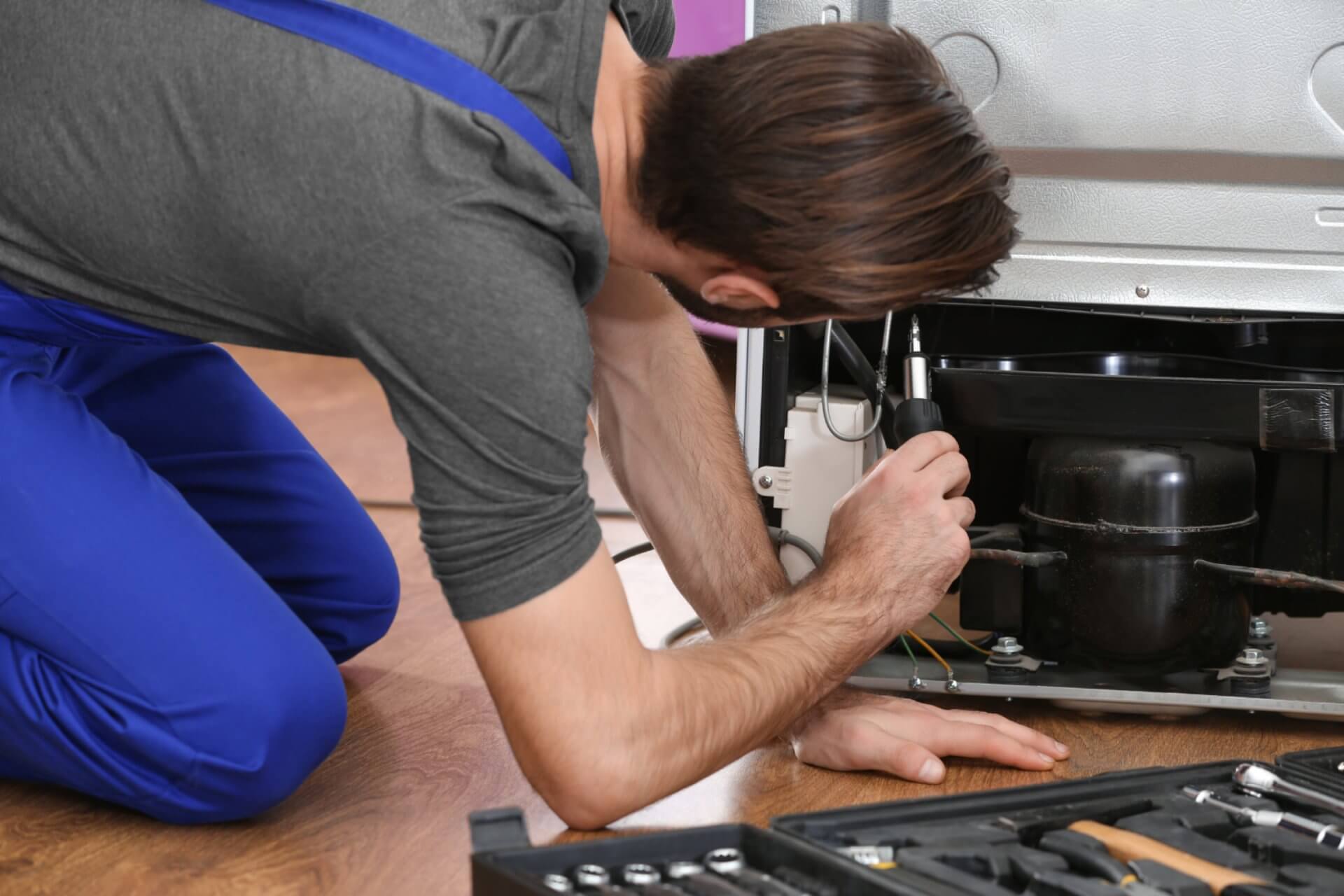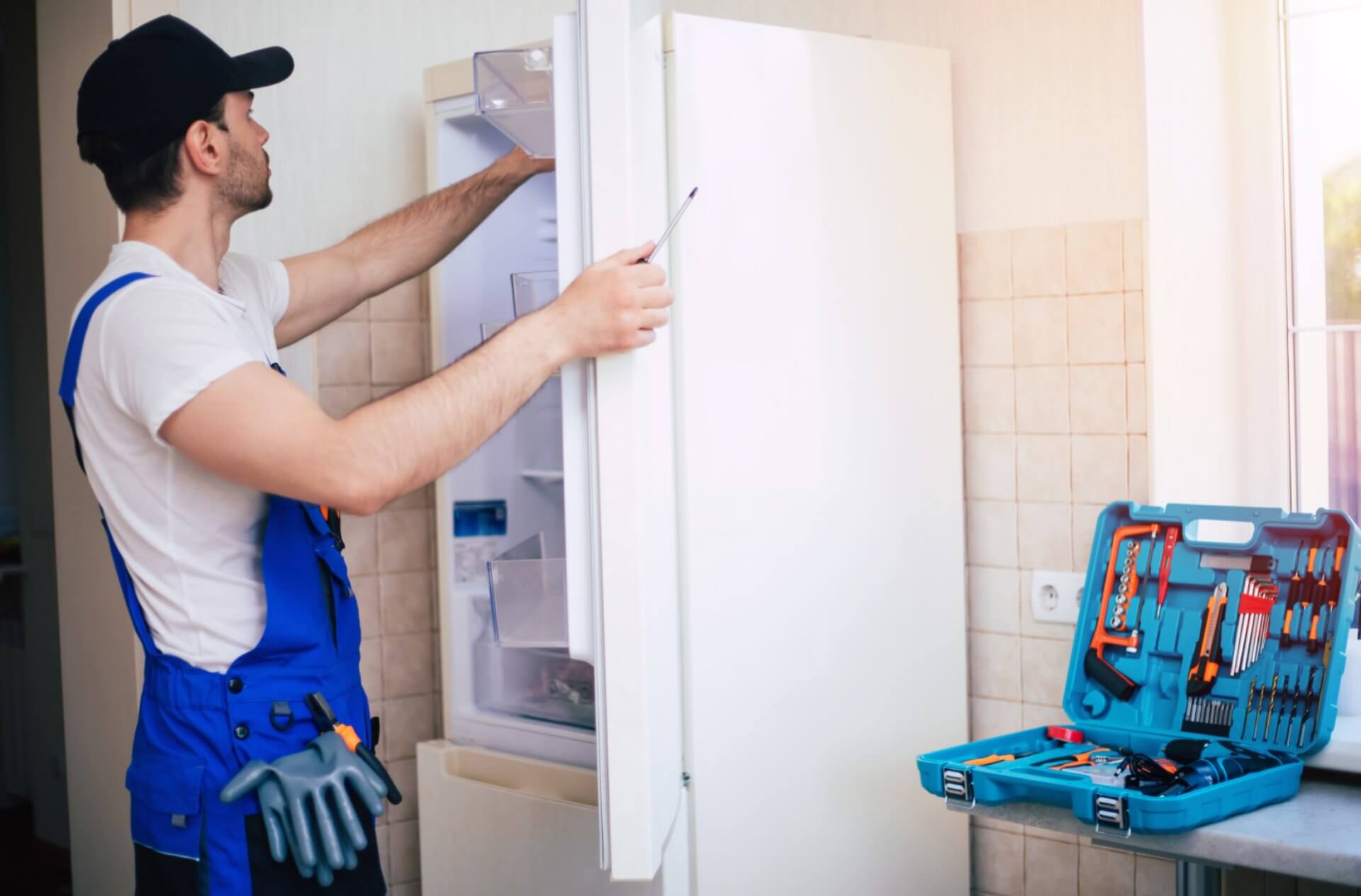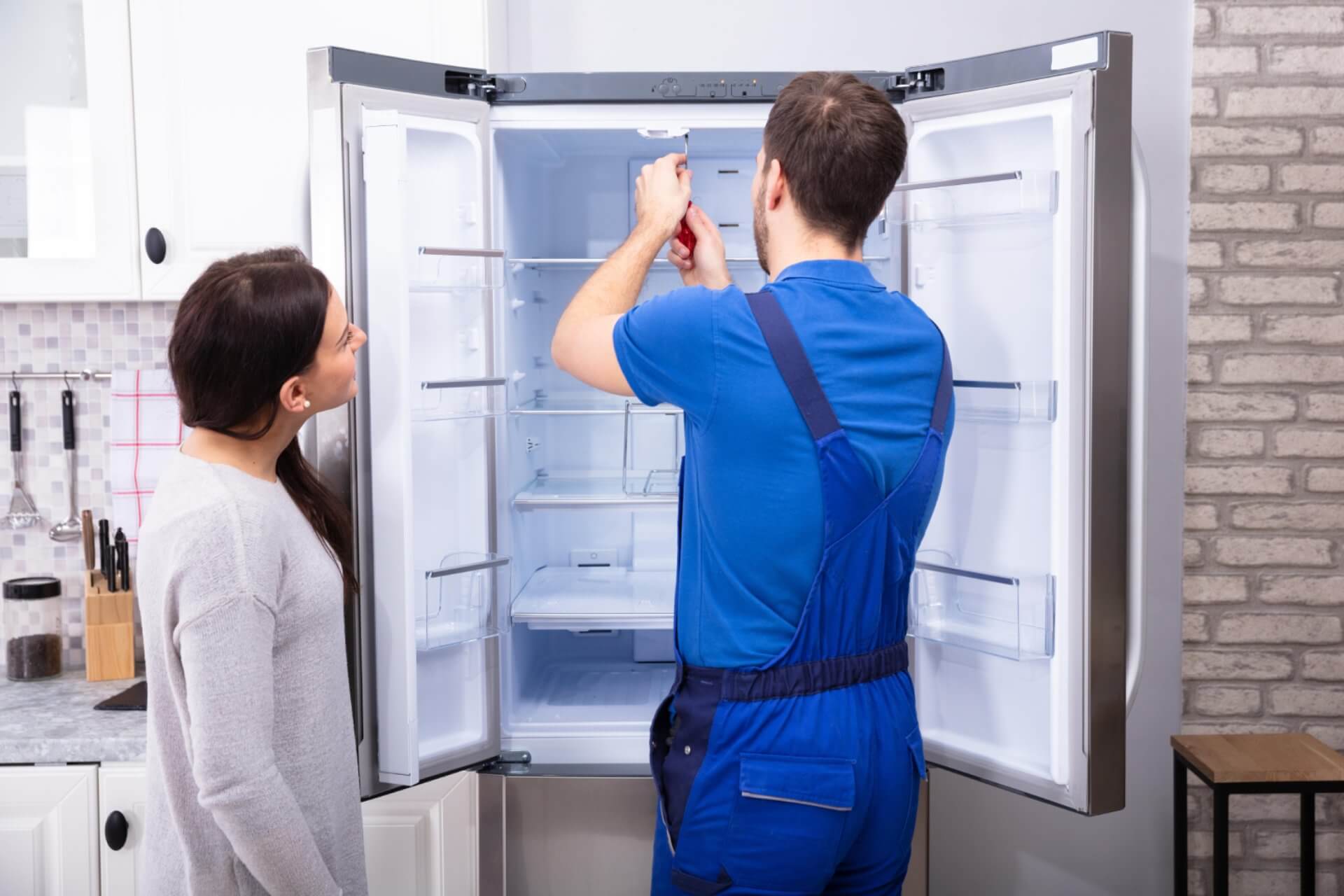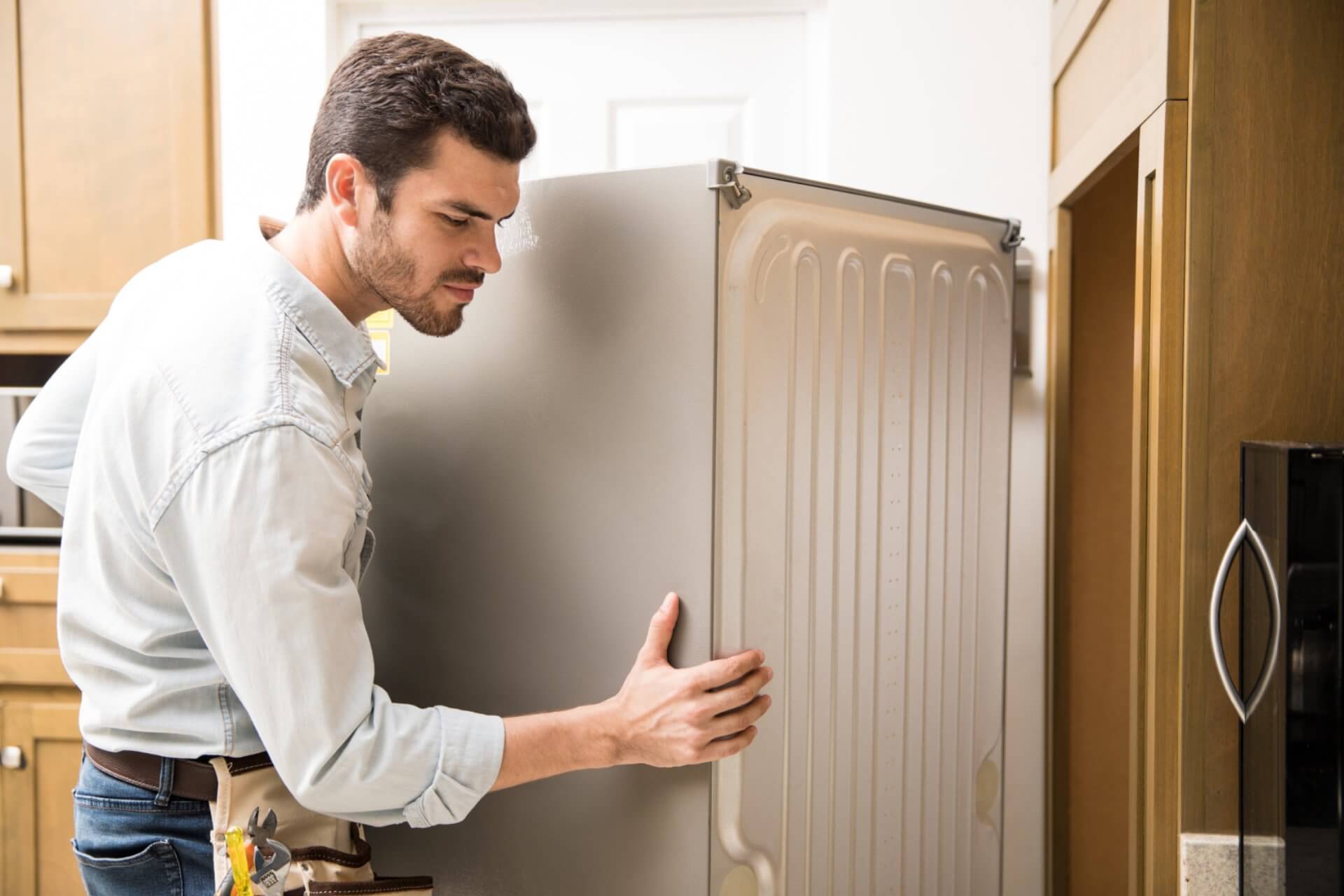10 Warning Signs Your Fridge Compressor is Failing | Australian Guide 2025
Your refrigerator works tirelessly around the clock to keep your food fresh and safe. At the heart of this hardworking appliance is the compressor – often described as the "engine" of your fridge. When this crucial component starts to fail, it's not just inconvenient – it can lead to food spoilage, higher energy bills, and potentially a complete breakdown requiring expensive repairs or even replacement.
The good news? A failing compressor usually gives several warning signs before it completely stops working. By knowing what to look for, you can often catch problems early, potentially saving hundreds of dollars and preventing that dreaded scenario of finding all your food spoiled.
After helping countless homeowners diagnose refrigerator problems, I've identified the top 10 warning signs that indicate your compressor may be on its last legs. Let's explore these signals so you can take action before disaster strikes.

1. Your Refrigerator Is Running Constantly
What's Happening: One of the earliest and most common signs of compressor trouble is a refrigerator that seems to run non-stop. While all fridges cycle on and off throughout the day, a healthy refrigerator typically runs 40-80% of the time depending on conditions. If you notice your fridge running continuously for more than 24 hours, it could indicate your compressor is struggling to maintain proper cooling.
Why It Happens:
- The compressor has to work harder to achieve the same cooling effect
- Internal components are wearing out, reducing efficiency
- The compressor may be losing its ability to properly pressurize the refrigerant
What You Can Check:
- Make sure the condenser coils (usually at the back or bottom) aren't covered in dust
- Verify the door seals are intact and closing properly
- Check that the temperature is set correctly (3-4°C for the fridge, -18°C for the freezer)
If these quick fixes don't help and the constant running continues, it's likely your compressor is struggling.
2. Food Spoiling Faster Than Normal
What's Happening: You might notice milk going sour before its expiration date, vegetables wilting quickly, or frozen foods becoming soft despite the temperature settings appearing normal. This happens because the compressor can't maintain consistent cooling.
Why It Happens:
- The compressor may be running but not generating enough pressure
- Refrigerant levels may be low due to compressor issues
- The compressor might be cycling incorrectly, creating temperature fluctuations
How to Test: Place an appliance thermometer in different areas of your refrigerator. The main compartment should maintain 3-4°C consistently. If the temperature varies by more than 2°C throughout the day despite a properly set thermostat, your compressor may be failing.
Food Safety Tip: According to Food Standards Australia New Zealand, perishable foods shouldn't be kept above 5°C for more than two hours. If your refrigerator can't maintain temperatures below this threshold, you risk foodborne illness.
3. Unusual or Excessive Noise
What's Happening: All refrigerators make some noise, but certain sounds are red flags for compressor problems. Listen for:
- Loud buzzing or humming that's noticeably louder than usual
- Clicking sounds that repeat every few minutes
- Knocking or clunking noises when the compressor tries to start
- A high-pitched squeal or chatter
Why It Happens:
- Motor bearings in the compressor wearing out
- Start relay or capacitor failing (clicking sound)
- Electrical components within the compressor deteriorating
- Compressor mount loosening, causing vibration
What to Check: Pull your refrigerator away from the wall and listen near the compressor (usually a black tank-like object at the bottom rear). If the noise is significantly louder here, it confirms the compressor is the source.

4. Compressor Running Hot
What's Happening: The compressor area feels unusually hot to the touch. While some warmth is normal as the compressor expels heat from inside the refrigerator, excessive heat indicates a problem.
Why It Happens:
- The compressor is working harder than it should
- Internal electrical components may be failing
- The start relay or capacitor could be malfunctioning
- Refrigerant levels might be incorrect
How to Test: After your refrigerator has been running for at least 30 minutes:
- Carefully place your hand near (not on) the compressor
- It should feel warm but not uncomfortably hot
- If it's too hot to keep your hand near it for more than a few seconds, that's a warning sign
Safety Warning: According to AS/NZS 3000 (Australian Electrical Safety Standards), excessive heat from electrical components presents a potential fire hazard. Never ignore a compressor that's running unusually hot.
5. Tripping Circuit Breaker
What's Happening: If your refrigerator is suddenly causing the circuit breaker to trip, especially when the compressor cycle begins, it's a serious warning sign of electrical problems within the compressor.
Why It Happens:
- Electrical shorts developing in the compressor windings
- Start capacitor failing, causing power surges
- Compressor motor binding and drawing excessive current
- Internal electrical components breaking down
What to Do:
- Reset the circuit breaker once
- If it trips again when the refrigerator tries to start, unplug the appliance
- This is not a DIY repair situation - electrical issues require professional attention
This symptom often indicates the compressor is in the final stages of failure and likely needs replacement.
6. Refrigerator Back or Sides Feel Warm
What's Happening: The exterior walls of your refrigerator feel unusually warm, particularly the back panel or side walls where the condenser coils might be located.
Why It Matters: Some warmth is normal, but excessive heat indicates the cooling system is struggling. A failing compressor often causes the entire refrigeration system to work harder, generating more heat than usual.
What to Check:
- Make sure there's adequate ventilation around your refrigerator (at least 5 cm clearance)
- Clean the condenser coils if accessible
- If these steps don't help, the compressor may be working inefficiently
Energy Efficiency Note: A refrigerator with a struggling compressor can use up to 50% more electricity. Given Australia's high energy costs, addressing this issue promptly can save significant money.
7. Strange Oil Leaks or Residue
What's Happening: You notice oily residue or puddles beneath your refrigerator, particularly around the compressor area at the rear.
Why It Happens:
- Compressor seals may be failing
- The compressor housing could be cracked
- Oil is leaking from the compressor system
- Refrigerant leaks (which can carry oil with them)
What It Means: Oil leaks almost always indicate mechanical failure within the compressor. The oil helps lubricate the internal components, and when it leaks out, further damage occurs rapidly.
Important Safety Note: According to Australian refrigerant handling guidelines, refrigerant leaks should be addressed by licensed technicians only. Refrigerants can be harmful to the environment and in some cases, hazardous to health.

8. Start Relay Issues
What's Happening: The compressor tries to start but shuts off quickly, often with a clicking sound. Alternatively, the compressor might not start at all despite the rest of the refrigerator (lights, fans) working normally.
Why It Happens: The start relay – a small device that helps the compressor motor start up – often fails before the compressor itself. It's like the starter in your car.
How to Test It:
- Unplug the refrigerator
- Locate the start relay (usually a small black device plugged into the side of the compressor)
- Remove it and shake it gently – if you hear rattling, the relay is bad
- Some models allow for relay replacement as a DIY fix
Replacing a bad start relay costs around $20-50 and might temporarily solve the problem, but it's often a precursor to complete compressor failure.
9. Frost Pattern Changes or Back Wall Issues
What's Happening: You notice unusual frost patterns, particularly on the back wall of the freezer. This might include:
- A solid sheet of ice on the back wall
- Frost in areas that were previously frost-free
- Complete lack of frost in a freezer that normally has some
Why It Matters: These irregular frost patterns suggest the cooling system isn't working consistently. When the compressor starts failing, it often cannot maintain steady pressure in the refrigeration system, leading to temperature fluctuations and abnormal frost formation.
What to Check: Before assuming it's the compressor, verify that:
- The defrost system is working properly
- Air vents within the freezer aren't blocked
- Door seals are intact
If these elements check out but frost issues persist, the compressor may be the culprit.
10. Age of Your Refrigerator
What's Happening: While not a "symptom" per se, the age of your refrigerator plays a crucial role in compressor diagnostics. Most refrigerators have an expected compressor lifespan of 8-15 years.
Why It Matters: If your refrigerator is:
- Less than 5 years old: Compressor failure is rare and often covered by warranty
- 8-12 years old: At higher risk for compressor problems
- Over 15 years old: Living on borrowed time compressor-wise
What to Consider: For refrigerators nearing or exceeding 10 years, any of the symptoms mentioned above become more significant. When multiple symptoms appear in an older unit, it's often more economical to replace rather than repair.
Australian Warranty Tip: Many manufacturers offer 5-year warranties on sealed system components (including the compressor). Premium brands like Miele and Bosch often offer 10-year compressor warranties. Check your documentation before paying for repairs.
What to Do If You Suspect Compressor Problems
If you notice several of these warning signs, here's how to proceed:
-
Document the symptoms – Note which warning signs you're experiencing and how frequently they occur
-
Check for simple fixes first:
- Clean the condenser coils
- Ensure proper ventilation around the unit
- Verify the refrigerator is level
- Test door seals with the dollar bill test
-
Use a thermometer to track actual temperatures in your fridge and freezer over 24 hours
-
Consider the age and value of your refrigerator:
- For units under 5 years: Seek warranty service
- For mid-age units (5-10 years): Get a professional diagnosis
- For older units (10+ years): Weigh repair costs against replacement
-
Get a professional assessment – A qualified technician can confirm compressor issues and provide repair options
The Economics of Compressor Replacement
When faced with a failing compressor, you'll need to make a financial decision:
Repair Costs in Australia:
- Compressor replacement: $600-1,000 for parts
- Labour: $250-500
- Total repair: $850-1,500
New Refrigerator Costs:
- Basic models: $800-1,500
- Mid-range: $1,500-3,000
- Premium: $3,000+
The 50% Rule: Most appliance professionals recommend replacement if the repair cost exceeds 50% of the price of a new unit. Since compressor replacement often approaches this threshold, replacement is frequently the more economical long-term choice, especially when you consider:
- New models are 30-40% more energy-efficient
- New refrigerators come with full warranties
- Modern features may improve usability
- Avoiding future repairs on an ageing unit
Conclusion
Your refrigerator's compressor is its most critical and expensive component. By recognising these warning signs early, you can make informed decisions about repairs versus replacement before facing an emergency situation with spoiled food and no cooling.
Remember that while some minor refrigerator issues are suitable for DIY repair, compressor problems typically require professional attention due to the specialised tools, refrigerant handling requirements, and electrical expertise needed.
Regular maintenance – particularly keeping those condenser coils clean and ensuring proper ventilation – is your best defence against premature compressor failure. With proper care, your refrigerator's compressor should provide many years of reliable service, keeping your food fresh and your energy bills reasonable.

Frequently Asked Questions (FAQs)
Can I replace a refrigerator compressor myself? Not recommended. Compressor replacement requires specialised tools, refrigerant handling certification, and electrical expertise. In Australia, refrigerant handling is regulated and should only be performed by licensed technicians.
How much does a new compressor cost in Australia? The compressor itself typically costs $600-1,000, with labour adding another $250-500. Total replacement typically ranges from $850-1,500, which is why many opt for a new refrigerator instead. Check if repairs are covered under Australian Consumer Law warranty protection.
Is it worth fixing a compressor? For refrigerators under 5 years old (especially if under warranty) – yes. For units over 10 years old, replacement is usually more economical. For refrigerators between 5-10 years, get a professional assessment and compare repair costs to replacement.
Why do refrigerator compressors fail? Common causes include: electrical problems, excessive heat due to poor ventilation, refrigerant issues, normal wear and tear, power surges, and manufacturing defects. Regular cleaning of condenser coils can significantly extend compressor life.
How long do refrigerator compressors typically last? Most refrigerator compressors are designed to last 10-15 years with proper maintenance. Premium models may last up to 20 years. However, factors like ambient temperature, usage patterns, and maintenance significantly impact lifespan.
Will my food spoil immediately if my compressor fails? Not immediately. A well-insulated refrigerator will keep food cold for 4-6 hours without power if the door remains closed. However, once the temperature rises above 5°C, perishable foods should not be kept for more than 2 hours according to food safety guidelines.

About Julian
Home appliance enthusiast and DIY repair specialist with a passion for helping others save money on appliance maintenance.
Related Articles

How to Extend the Life of Your Refrigerator: 7 Maintenance Tips

Freezer Not Cold Enough? 6 DIY Fixes for Semi-Frozen Food | Australian Guide

